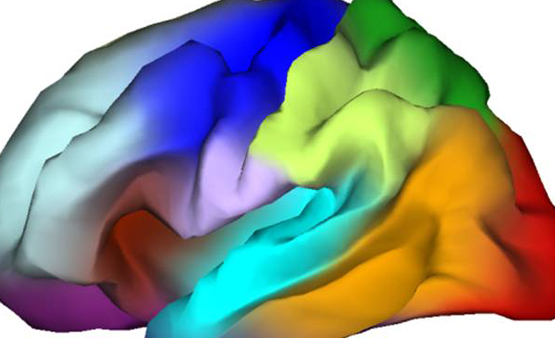First ‘genetic atlas’ of the brain
April 3, 2012
The first atlas of the surface of the human brain based on genetic information has been produced by a national team of scientists, led by researchers at the University of California, San Diego School of Medicine and the VA San Diego Healthcare System.
This genetic atlas differs from other brain maps based on physiology or function and provides scientists with a new tool for studying and explaining how the brain works and may help in developing treatments for brain disorders associated with genetics.
Other atlases have mapped the brain by cytoarchitecture — differences in tissues or function. The new map is based entirely on genetic information derived from magnetic resonance imaging (MRI) of 406 adult twins participating in the Vietnam Era Twin Registry (VETSA), an ongoing longitudinal study of cognitive aging supported in part by grants from the National Institutes of Health (NIH).
It follows a related study published last year by Kremen, Dale and colleagues that affirmed the human cortical regionalization is similar to and consistent with patterns found in other mammals, evidence of a common conservation mechanism in evolution.
The atlas plots genetic correlations between different points on the cortical surface of the twins’ brains. The correlations represent shared genetic influences and reveal that genetic brain divisions do not map one-to-one with traditional brain divisions that are based on structure and function. “Yet, the pattern of this genetic map still suggests that it is neuroanatomically meaningful,” said Kremen.
Kremen said the genetic brain atlas may be especially useful for scientists who employ genome-wide association studies, a relatively new tool that looks for common genetic variants in people that may be associated with a particular trait, condition or disease.
Ref.: Chi-Hua Chen, et al., Hierarchical Genetic Organization of Human Cortical Surface AreaScience, 2012; [DOI:10.1126/science.1215330]
